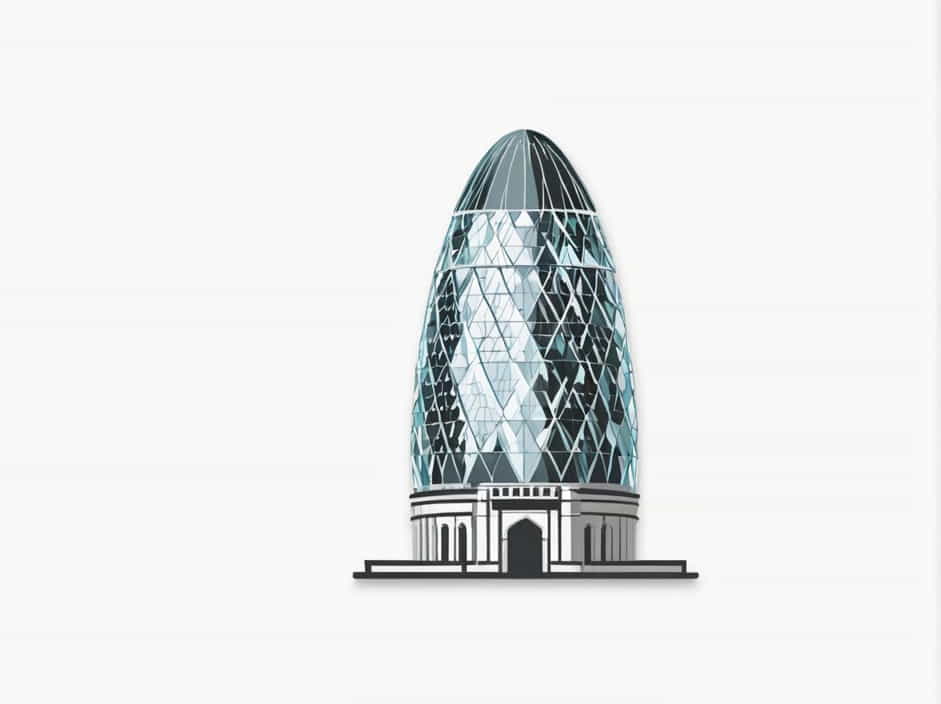The Gherkin, officially known as 30 St Mary Axe, is one of London’s most recognizable skyscrapers. Its unique, curved shape and glass facade make it a standout feature of the city’s skyline. But when was the Gherkin built, and what makes it such an architectural marvel? This topic explores the construction timeline, design, and impact of this modern London landmark.
The Year the Gherkin Was Built
The Gherkin was built between 2001 and 2003 and officially opened in 2004. The project was developed to replace the former Baltic Exchange building, which was heavily damaged by a bomb attack in 1992. After several design proposals, architect Norman Foster and his firm, Foster + Partners, created the innovative structure we see today.
The Construction Timeline of 30 St Mary Axe
1992: Destruction of the Baltic Exchange
On April 10, 1992, a bomb attack in the City of London caused severe damage to the Baltic Exchange, a historic trading building. Due to the extent of the destruction, the original structure could not be restored, leading to discussions about a new skyscraper.
1996-2000: Planning and Design
Initially, a 92-story tower, known as the “Millennium Tower,” was proposed for the site. However, concerns about its height and impact on London’s skyline led to its cancellation. Instead, a new design was introduced by Norman Foster, featuring a more sustainable and aerodynamically efficient tower—what would later become the Gherkin.
2001: Construction Begins
After securing planning approval, construction officially started in 2001. The building’s steel framework and distinctive curved glass panels were designed to improve energy efficiency and reduce wind resistance.
2003: Completion of the Structure
By 2003, the Gherkin’s construction was completed, with all 7,429 glass panels installed. The building’s design allowed it to use 50% less energy than a standard office tower of similar size.
2004: Official Opening
On April 28, 2004, the Gherkin was officially opened. Since then, it has become one of London’s most famous skyscrapers and a global symbol of modern architecture.
Architectural Features of The Gherkin
A Unique Shape and Energy Efficiency
One of the most striking features of the Gherkin is its tapered, bullet-like shape, which reduces wind resistance and enhances stability. The glass facade features diamond-shaped panels, designed to maximize natural light and minimize the need for artificial lighting.
Height and Structure
- Total Height: 180 meters (591 feet)
- Floors: 41 stories
- Glass Panels: 7,429
- Weight: 10,000 tons of steel
The building’s internal ventilation system helps regulate temperature naturally, reducing reliance on air conditioning.
The Spiraling Floor Plan
Inside, the Gherkin features an open-plan office layout, with each floor rotating slightly around a central core. This design enhances airflow and creates a more spacious working environment.
The Gherkin’s Role in London’s Skyline
An Icon of Modern London
Since its opening, the Gherkin has become a symbol of London’s financial district. Its futuristic design contrasts with historic landmarks like St. Paul’s Cathedral and Tower Bridge, showcasing the city’s blend of old and new architecture.
A Popular Filming Location
The Gherkin has appeared in several movies and TV shows, including “Harry Potter and the Half-Blood Prince” and “Basic Instinct 2”. Its distinctive shape makes it an easily recognizable backdrop for filmmakers.
Public Perception and Awards
Despite initial skepticism, the Gherkin quickly gained positive recognition. It won the Stirling Prize for Architecture in 2004 and remains one of the most admired modern skyscrapers in the world.
The Gherkin, built between 2001 and 2003 and opened in 2004, has become one of London’s most iconic skyscrapers. Designed by Norman Foster, its innovative architecture and energy-efficient features set a new standard for modern office buildings. Today, it stands as a testament to London’s resilience, progress, and architectural excellence. Whether viewed from the ground or admired from a distance, the Gherkin is a landmark that continues to shape the city’s skyline.
